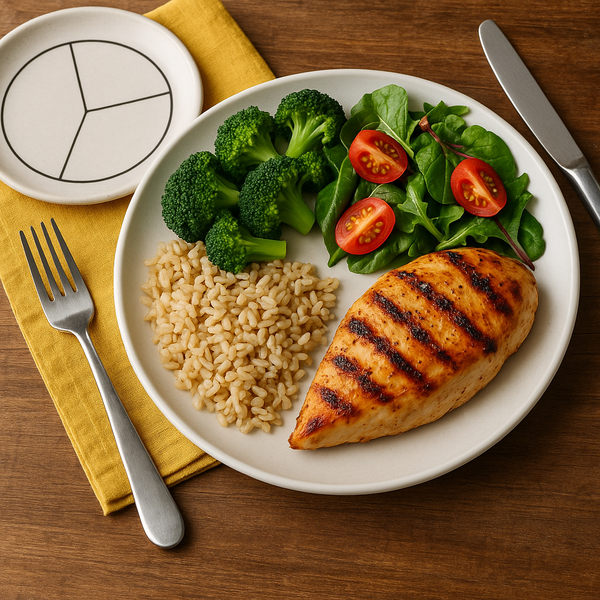
Understanding and practicing effective portion control is a fundamental step towards achieving and maintaining overall health and wellness. It's not about deprivation, but rather about learning to enjoy the foods you love in appropriate amounts, ensuring you get the nutrients your body needs without consuming excess calories. Mastering this skill can significantly impact your energy levels, digestion, and long-term health outcomes, making it a cornerstone of a balanced lifestyle.
What is Portion Control?
Portion control refers to the practice of managing the quantity of food you eat during a meal or snack. It's distinct from serving size, which is a standardized amount of food often listed on nutrition labels. Portion control is about deciding *how much* of that food you put on your plate and ultimately consume. In a world where food portions, especially in restaurants and pre-packaged meals, have grown considerably over the decades, learning to manage what's on your plate is more important than ever for preventing overconsumption.
Why is Portion Control Important?
Effective portion control plays a crucial role in managing calorie intake. Consuming more calories than your body uses leads to weight gain over time, which can increase the risk of various health issues like heart disease, type 2 diabetes, and certain cancers. By controlling portions, you can better manage your calorie balance. Beyond calorie management, portion control helps ensure you're getting a balanced mix of nutrients. When you fill your plate with excessive amounts of one food group, you might miss out on the benefits of others. It also encourages mindful eating, helping you become more aware of your hunger and fullness cues.
Practical Strategies for Portion Control
Implementing portion control doesn't have to be complicated. There are many simple, practical strategies you can adopt in your daily life.
Use Smaller Plates, Bowls, and Utensils
This is a classic and effective visual trick. Using smaller dinner plates, salad bowls, and even smaller forks and spoons can make a standard portion look more substantial, psychologically tricking your brain into feeling more satisfied with less food. A large plate can make a healthy portion look sparse, tempting you to add more. Conversely, a smaller plate makes the same amount of food appear generous.
Measure and Weigh Your Food
Especially when you are starting, getting a clear idea of what a standard serving size actually looks like is invaluable. Use measuring cups and a kitchen scale to portion out common foods like grains, pasta, nuts, and proteins. Do this for a week or two, and you'll develop a much better visual estimate of correct portions without needing to measure every time.
Pay Attention to Serving Sizes on Nutrition Labels
Nutrition labels provide valuable information, including the standard serving size for the package's contents. Understanding these serving sizes is key. A bag of chips might look like a single serving, but the label could indicate it contains two or three. Always check the serving size and the number of servings per container to understand how many calories and nutrients you're consuming.
Pre-Portion Snacks and Meals
When preparing snacks or packing lunches, divide them into individual containers or bags beforehand. This prevents mindless eating directly from a large bag or box. For meals, portion out your plate in the kitchen rather than bringing serving dishes to the table, which can encourage second helpings.
Listen to Your Body's Hunger and Fullness Cues
Mindful eating involves paying attention to your internal signals. Eat when you are hungry, not just when you are bored, stressed, or emotional. Stop eating when you feel comfortably full, not stuffed. Eating slowly, chewing thoroughly, and putting your fork down between bites can help you recognize these signals more effectively.
Slow Down While Eating
Eating quickly can lead to overconsumption because it takes time for your stomach to signal to your brain that you are full. By slowing down, savoring each bite, and paying attention to the textures and flavors of your food, you give your body time to register satiety. Aim to make meals last at least 20 minutes.
Drink Water Before Meals
Sometimes thirst can be mistaken for hunger. Drinking a glass of water before you start eating can help you feel more satisfied and potentially reduce the amount of food you consume during the meal. Staying hydrated throughout the day is also important for overall health and metabolism.
Focus on Nutrient-Dense Foods
Filling your plate with nutrient-dense foods like vegetables, fruits, lean proteins, and whole grains can help you feel fuller for longer compared to calorie-dense, low-nutrient options. These foods provide volume and fiber, which contribute to satiety. Aim for your plate to be half-filled with non-starchy vegetables.
Divide Restaurant Portions
Restaurant meals are notoriously large, often representing two or even three times a standard serving size. When eating out, immediately ask for a take-away box and pack up half of your meal before you even start eating. Alternatively, share an entree with a dining companion or order an appetizer as your main course.
Plan Your Meals and Snacks
Having a plan can prevent impulsive, oversized eating. When you know what and when you will eat, you're less likely to grab whatever is convenient (and often high in calories and low in nutrients) in large quantities out of extreme hunger.
Consistency is Key
Portion control is not about perfection; it's about consistency and progress over time. Don't get discouraged by occasional slip-ups. View each meal as a new opportunity to practice these strategies. Over time, these practices will become habits, making it easier to manage your food intake without constant conscious effort. Implementing portion control strategies is a powerful way to take control of your eating habits and support your health goals. By making small, consistent changes, you can build a sustainable approach to eating that nourishes your body and contributes to a healthier lifestyle.

